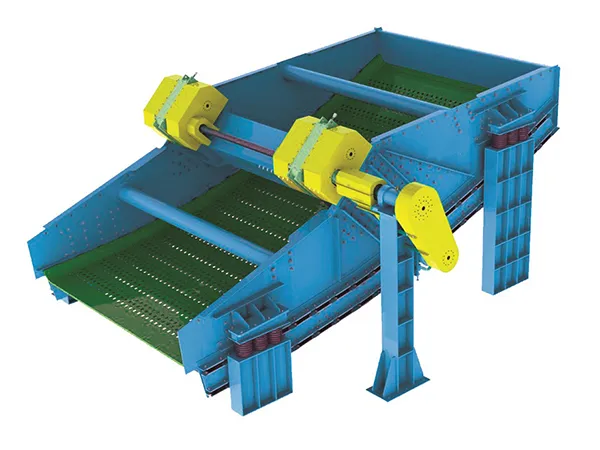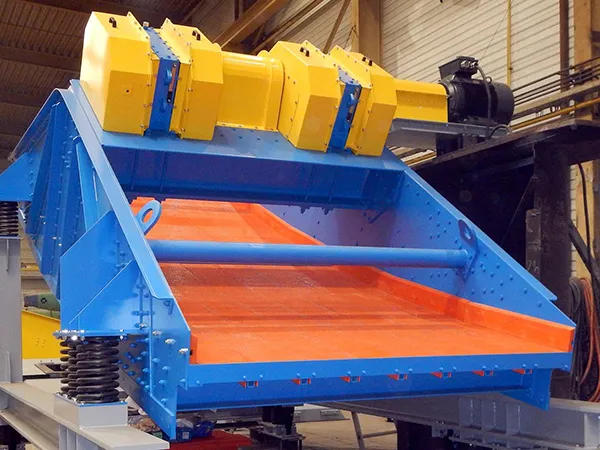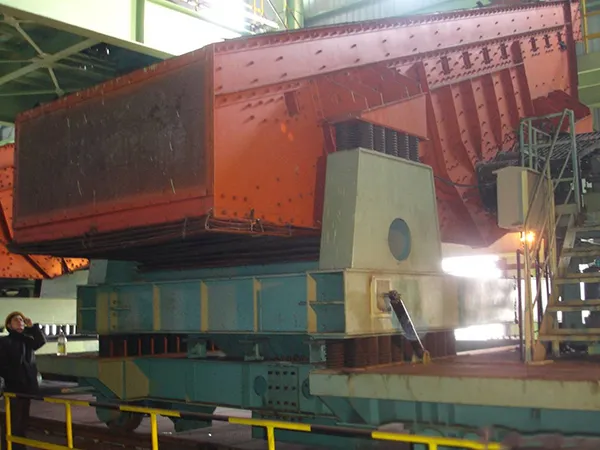time:Feb 18, 2024 source:ZEXCIT
A vibrating screen is a mechanical screening device used to separate materials into different particle sizes or to remove impurities. It consists of a screen mesh that vibrates in a circular motion or along a linear path. The vibration causes the material to be separated or sieved based on size and shape.
Vibrating screens are commonly used in industries such as mining, construction, agriculture, pharmaceuticals, and recycling. They are employed in various processes including sorting, classifying, dewatering, scalping, and sizing of materials.

Screen Mesh: The screen mesh is the surface on which the material is separated. It can be made of metal wire, synthetic materials like polyurethane or rubber, or perforated plates depending on the application.
Vibration Mechanism: Vibrating screens use either eccentric shafts, unbalanced flywheels, or electromagnetic vibrators to generate the vibrating motion. This motion causes the material to move across the screen and be separated according to size.
Deck Configuration: Vibrating screens can have single or multiple decks stacked on top of each other. Multiple decks allow for the simultaneous separation of different particle sizes.
Screen Angle: The angle of the screen can be adjusted to optimize the screening process. A steeper angle increases the residence time of the material on the screen, improving efficiency.
Feed Inlet and Outlet: Material is fed onto the vibrating screen through a feed inlet and exits through an outlet. These openings can be adjusted to control the flow rate and distribution of material.
Drive Unit: The drive unit provides the power to operate the vibrating screen. It may consist of electric motors, hydraulic or pneumatic drives, or a combination of these.
Support Structure: The screen is mounted on a support structure which absorbs the vibrations and provides stability. The support structure may include springs, rubber isolators, or other damping elements.
Screen Cleaning Mechanism: To prevent clogging and maintain efficiency, vibrating screens often incorporate a screen cleaning mechanism such as ball decks, ultrasonic deblinding systems, or brushes.

Screen Panels: These are the most frequently replaced parts of vibrating screens. Screen panels come in various materials such as rubber, polyurethane, and stainless steel wire mesh. They can wear out due to abrasion, impact, or corrosion.
Screen Frame: The frame holds the screen panels in place and provides structural support. Over time, it may need replacement due to wear and tear or damage.
Vibration Exciter: This is the component responsible for generating the vibrating motion of the screen. It consists of eccentric weights mounted on rotating shafts. Bearings, seals, and belts associated with the exciter may need replacement.
Springs: Vibrating screens use springs to support the screen box and absorb vibrations. These springs can lose their elasticity over time and require replacement to maintain proper functioning.
Motor and Drive Components: Electric motors, belts, pulleys, and other drive components may need replacement if they fail or wear out.
Bearings: Vibrating screens have numerous bearings supporting various moving parts. These bearings can wear out due to high loads, improper lubrication, or contamination, necessitating replacement.
Seals and Gaskets: Seals and gaskets prevent leakage of material and lubricants from the vibrating screen. Over time, they may degrade and need replacement to maintain efficiency and prevent contamination.
Support Structure: The support structure of the vibrating screen, including beams, cross members, and brackets, may require maintenance or replacement if damaged or corroded.
Clamps and Fasteners: Clamps and fasteners secure screen panels and other components in place. They may need replacement if damaged or if screen panels need to be changed.
Drive Couplings: Couplings connect the motor to the vibrating screen shaft. These may need replacement if they become worn or damaged.

A vibrating screen works on the principle of vibration to separate particles and improve efficiency.
Vibration: The vibrating screen operates by applying a vibration to the screen surface. This vibration causes the particles to move along the screen surface and separate into different size fractions.
Screen Surface: The screen surface is typically made of mesh or perforated plate. It allows particles smaller than the screen openings to pass through while retaining larger particles.
Eccentric Shaft: In most vibrating screens, the vibration is generated by an eccentric shaft that rotates on bearings. The eccentricity of the shaft causes the screen to vibrate in a circular motion.
Drive Mechanism: The eccentric shaft is usually driven by a motor through a V-belt or direct drive mechanism. As the shaft rotates, it imparts the necessary vibration to the screen.
Screen Motion: The motion of the screen can be linear, circular, or elliptical, depending on the design of the screen and the application requirements. Each motion type has its advantages and is chosen based on factors such as particle size distribution and desired efficiency.
Deck Configuration: Vibrating screens can have single or multiple decks stacked on top of each other. Each deck typically has its own mesh size or perforation pattern to achieve the desired particle separation.
Screen Angle: The angle of inclination of the screen surface also plays a role in the screening process. It affects the trajectory of the particles and can be adjusted to optimize performance.
Feed Material: The feed material is introduced onto the screen surface either by gravity or through a conveyor. As the material moves along the screen, the vibration separates it into different size fractions.
Screening Efficiency: The efficiency of a vibrating screen depends on factors such as the amplitude and frequency of vibration, screen surface area, screen aperture size, and the characteristics of the feed material.
No information
What are the types of vibrating screen exciter?

ZSK eccentrics series linear vibrating screen is a new and efficient universal screening equipment, screen box trajectory which is approximately a straight line. This series of screen machine embodies most of the advantages of a biaxial linear screen, with the most extensive scope and application prospects.
READ MORE
The DF Series Vibrator refers to a range of specialized vibrators used in various industrial applications to generate controlled vibrations. These vibrators are designed for reliability, durability, and efficiency, making them suitable for integration into equipment such as vibrating screens, feeders, conveyors, compactors, and sieves.
READ MORE
A flip flop vibrating screen is a type of vibrating screen that utilizes the principle of elasticity to effectively screen and separate fine materials. This unique design creates a flip-flop motion during the screening process, which helps prevent material blinding and pegging.
READ MORECopyright © 2023 Xinxiang Zongyuan Machinery Equipment Co., Ltd. | All Rights Reserved.